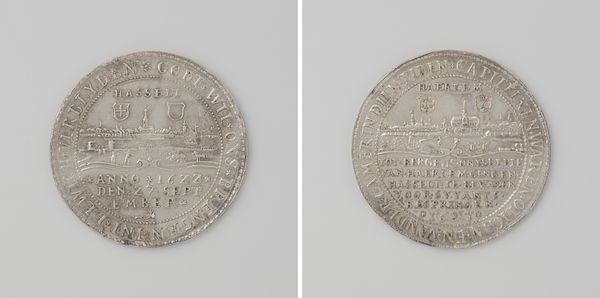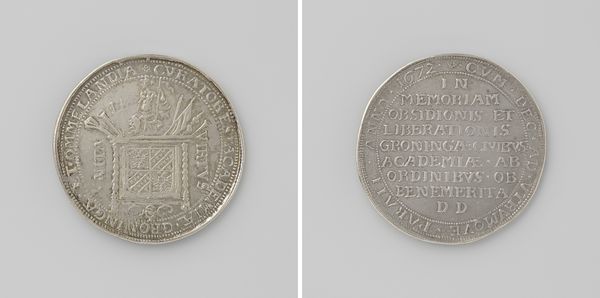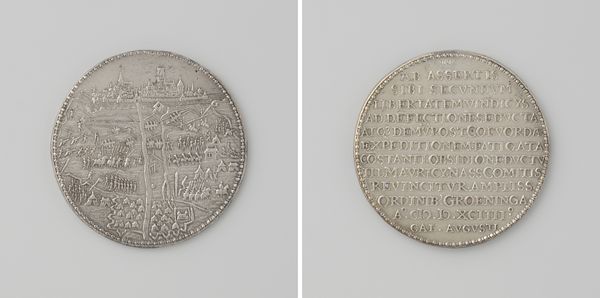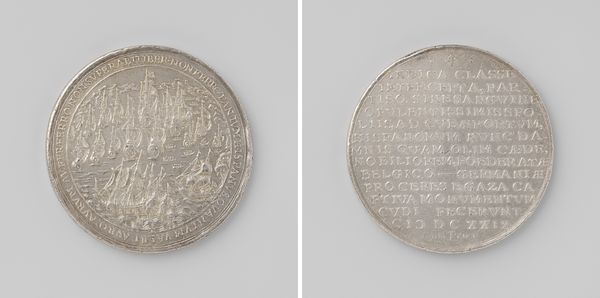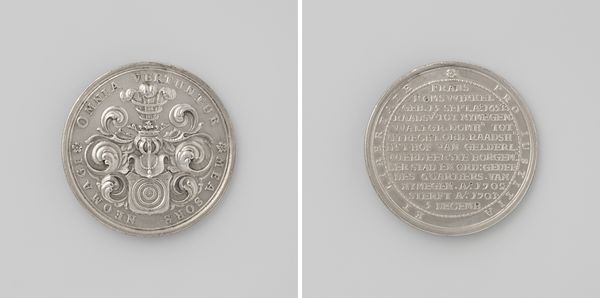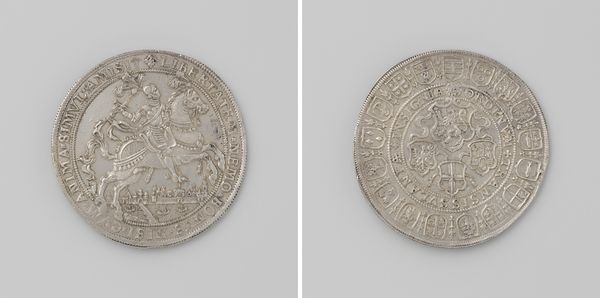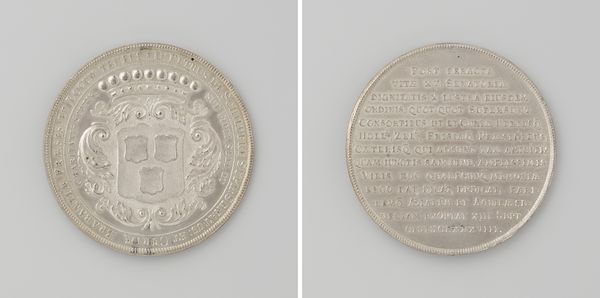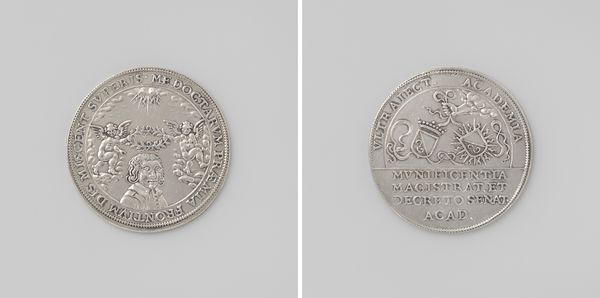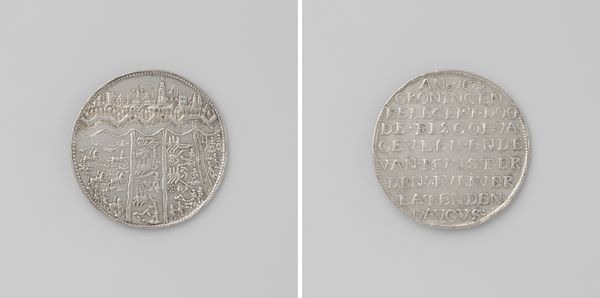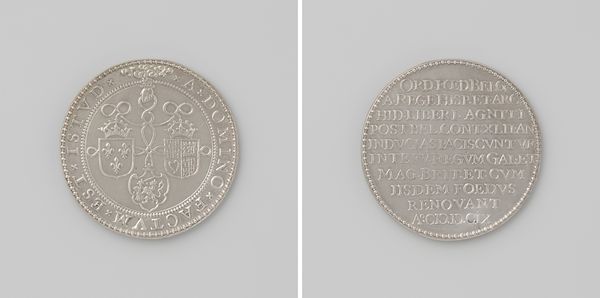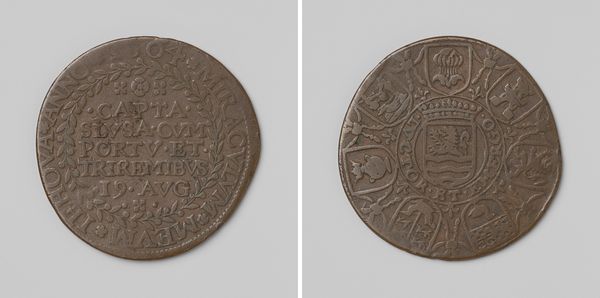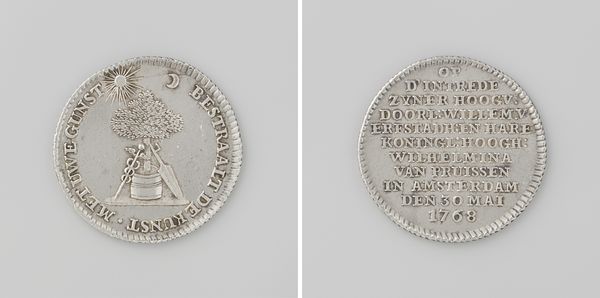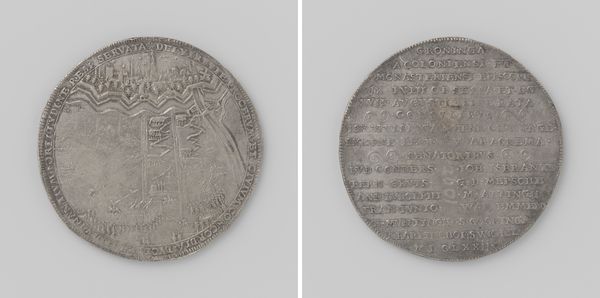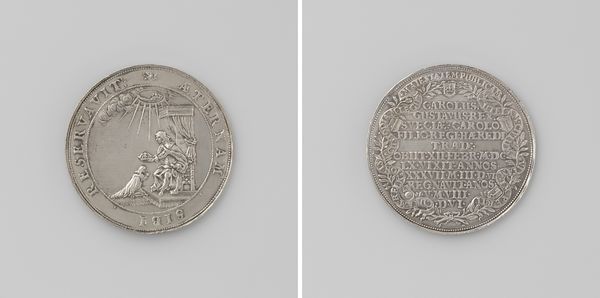
print, metal, engraving
#
dutch-golden-age
# print
#
metal
#
geometric
#
engraving
Dimensions: diameter 5.3 cm, weight 570 gr
Copyright: Rijks Museum: Open Domain
Curator: I'm immediately struck by the cool, almost clinical quality of this metal engraving. It has the detached feel of something that's meant to last, to serve as a historical record. Like looking into a distant mirror reflecting some old story that somebody wants you to not forget. What do you think? Editor: The cool detachment is part of its charm. It reminds me of found treasure, something you'd brush the dirt off of and squint at, wondering what lives it’s seen, what pockets it's jingled in. And the size, right? To think this object fit in the palm of somebody’s hand. That is pretty mind-blowing! Curator: Exactly. We are observing a metal print from 1597 titled “Bevrijding van Twente” - “Liberation of Twente”. Consider Twente, a region in the Netherlands, at a time of immense sociopolitical upheaval. Twente being freed embodies a significant narrative around Dutch identity. This piece isn't just a depiction; it’s a symbol steeped in the complex dynamics of power, nationhood and Dutch ascendancy at the time. Editor: Dutch ascendancy, yes. Freedom fries from the old world? Is this propaganda? Curator: In a sense, absolutely. Objects like this were certainly designed to influence public perception. Consider how the engravings are carefully wrought with symbolism to convey an intended meaning, or at least a preferred point of view, to the beholder. Note that such engravings at the time circulated widely and functioned as powerful communicators in spreading and influencing the collective political imaginary. Editor: I see what you mean; you can really get lost in the symbolism here, as well as how and where such objects traveled and ended up being found centuries later. Okay, so now I’m curious: when we look at something like “liberation,” centuries on, how do we reconcile these old narratives with our own understanding of these stories? It is a fascinating time-capsule! Curator: Precisely, and this raises essential questions. The piece becomes a lens through which we can critically examine power dynamics and narrative construction both past and present, hopefully enriching our engagement with today’s social justice matters. Editor: Looking at “Bevrijding van Twente” has changed my perception and enriched it considerably. I’ll be mulling this one over. Thanks! Curator: It's a dialogue worth having! It forces us to be far more reflective as a result of taking the long view of history and our shared destiny.
Comments
No comments
Be the first to comment and join the conversation on the ultimate creative platform.
